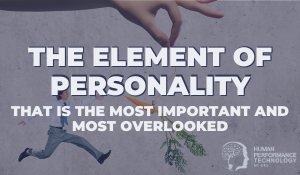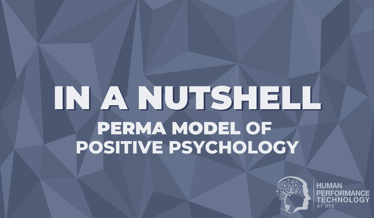Applying the McKinsey 7S Framework at a Team Level
In our last post we gave a high-level outline of the McKinsey 7S framework. In this post, we will take a deeper dive into each of the seven elements and how we might think about them as the leader of a frontline team.
The McKinsey 7S framework is traditionally applied at the organisation or division level. As organisations flatten and put more authority closer to the frontline, it can also be a valuable tool for frontline leaders to consider how they impact strategy execution daily. It can also be a helpful tool, to keep the competing priorities a leader is juggling, in perspective and aligned to a bigger picture.
The McKinsey 7S is a collection of seven elements that need to be aligned in order for an organisation or team to be successful. We overviewed the model in this previous post.
Let's walk through the seven elements of the framework and consider how each element might apply at the individual team level:
1. Strategy
Some questions to consider around strategy at the team level might include:
- How do we contribute to strategy at an individual team level?
- How do our team’s goals/objectives contribute to the company goals and objectives?
- If we are not contributing, how might we contribute further?
- What course corrections do you think are necessary and why?
2. Structure
Structure is how a business is organised, how tasks and responsibilities are allocated, and how the organisation maintains accountability. Structure can be organised around function, customer type, industry, specialisation, geography, or a combination. Structure is often displayed as an organisational chart, but this should also include where different kinds of decisions get made, how the chain of command is set up, how different parts of the team are accountable to each other and how they interconnect. A clear structure that outlines responsibilities and accountabilities helps to avoid chaos and confusion. A simple way to think of structure is; that it defines how decisions get made and how things get done in an organisation.
Some questions to consider around structure at the team level might include:
- How do we operate within the organisational structure at an individual team level?
- How is our team organised? Is it as efficient as it could be?
- Where are the bottlenecks in decision-making in our team? What about at an organisational level?
- How might we streamline our structure to be more efficient and aligned with the other six elements?
3. Systems
Systems are the processes, infrastructure, and workflows, both formal and informal that govern daily activities. It is essential to recognise the formal systems and how work actually gets done, which can often be via informal systems. Documented systems provide defined steps for how activities are completed to help ensure consistency. Many businesses call these standard operating procedures (SOPs). Some of the systems in the business ecosystem we might need to consider are Financial Systems, Operational Systems, HR Systems, Technology Systems, Manufacturing Systems, and Risk & Quality Systems. A simple way to think about systems is; the formal and informal ways tasks are completed in the organisation.
Some questions to consider around systems at the team level might include:
- What systems impact us at an individual team level?
- How do our systems and processes align with the organisation at large?
- In what ways are they misaligned with the larger organisation?
- What systems are working well?
- What systems could use some attention? Why?
4. Skills
Skills are the collective competencies and capabilities within the organisation that define the work a company can accomplish. Skills is about more than what the organisation has now, but how it will get, grow, maintain and protect the skills it needs. Skills is about the organisation's capacity and what it might need for the future. A clear picture of an organisation's skills, with an understanding of any gaps and how to address those gaps, is essential. A simple way to think of skills is; what the team is known for doing well and poorly.
Some questions to consider around skills at the team level might include:
- What skills do we have available at an individual team level?
- What abilities do we think we might need to be more effective?
- How might we acquire the skills we need?
- How can we ensure that our skills are known and utilised within our team and the organisation?
5. Staff
Staff refers to the general characteristics of the people aspect of an organisation or team. Staff encompasses how talent will be recruited, developed, motivated, and rewarded. Staff can be considered from two angles. The harder end of the spectrum includes the number of people required, pay and rewards, performance management, formal training, etc. The soft end of the spectrum might explore demographics, diversity, morale, and motivation. A simple way to think of staff is; the depth and breadth of the talent pool in the organisation/team, and how that can be maximised.
Some questions to consider around staff at the team level might include:
- What people do we have, and who do we need at an individual team level?
- What sort of people make up the team? Who is underrepresented?
- How can we attract the people we need?
- How can we ensure we induct and train those people to contribute to our team effectively?
6. Style
Style refers to the prevalent leadership style or manner in which the organisation or team is managed. Leadership style plays a vital role in setting the tone or culture of the organisation. Style defines how the organisation operates and interacts, including interpersonal relationships, leadership actions, and their symbolic value. Leaders can describe style, but it is ultimately defined by the priorities they set and the pattern of their actions. A simple way to think of style is how an organisation's or team's leaders influence and impact performance, productivity and corporate culture.
Some questions to consider around style at the team level might include:
- What style do we operate with at a team level?
- As a leader, what do you want your leadership style to be?
- What kind of team culture are we fostering?
- How do we treat people in our team?
- What behaviours will not be accepted?
7. Shared Values
Shared Values can be implicit or explicit but form the guiding principles, concepts or fundamental beliefs around which the business is built. Shared values (originally called "Superordinate goals" literally meaning "of higher order goals") move beyond just the mechanics of business and provide a "Northstar" to guide the actions of the organisation or team. The leader's role is to promote, live and course correct when these shared values are violated. A simple way to think of shared values is; how an organisation or team wants to express itself and leave its own mark.
Some questions to consider around shared values at the team level might include:
- What is important to us as a team?
- How do we foster and live the company values at a team level?
- As a leader, how do I promote (and enforce) our team and organisational values?
- How do we handle situations where our values are violated?
By asking these kinds of questions as a frontline leader, the McKinsey 7S framework can become a useful tool to help you:
- Manage performance,
- Create alignment,
- Navigate change, and
- Maintain a strategic focus.
With the interconnected nature of the model, the McKinsey 7S provides a framework to balance your priorities to make more effective and impactful leadership decisions - no matter what level of an organisation you may operate.
References
Peters, T., Waterman, R. & Phillips, J. 1980, 'Structure is Not Organisation', Business Horizons, p14-26
Peters, T. & Waterman, R. 2012, In Search of Excellence: Lessons from America's Best-Run, Harper Business
McKinsey Quarterly, 2008, Enduring Ideas: The 7-S Framework, McKinsey & Company, accessed 15 February 2023, <https://www.mckinsey.com/capabilities/strategy-and-corporate-finance/our-insights/enduring-ideas-the-7-s-framework>
Malan, Adele. Applying McKinsey's 7S Model Within Managed Healthcare Systems (MHS) to Assess the Organisation's Effectiveness and Ability to Adapt, 2003, Rand Africanns University
Abdul-Fattah Alshaher, Ali. The McKinsey 7S Model Framework for E-Learning System Readiness Assessment, 2013, College of Administration and Economics, University of Mosul, Iraq.
Mind Tools n.d., McKinsey 7-S Framework, accessed 15 February 2023, <https://www.mindtools.com/aicks4s/the-mckinsey-7-s-framework>
Cascade 2022, McKinsey 7S Model: Importance & How To Use It (2023), accessed 15 February 2023, <https://www.cascade.app/blog/mckinsey-7s-model>
Skills You Need n.d., The McKinsey 7 S Model of Organisational Alignment, accessed 16 February 2023, <https://www.skillsyouneed.com/lead/mckinsey-7-s.html>
Ovidijus Jurevicius 2022, McKinsey 7S Model, Strategic Management Insight, accessed 16 February 2023, <https://strategicmanagementinsight.com/tools/mckinsey-7s-model-framework/>
Malik, Priyanka, 2022, The McKinsey 7-S Model Framework, Explained, WhatFix, accessed 15 February 2023, <https://whatfix.com/blog/mckinsey-7s-model>
Kenton, Will, 2022, How to Use the McKinsey 7-S Model for Strategic Planning, Investopedia, accessed 17 February 2023, <https://www.investopedia.com/terms/m/mckinsey-7s-model.asp>

Trevor O'Sullivan
General Manager. Since the early 2000s, Trevor has worked with thousands of Talent Management professionals to develop and apply assessment-based talent management solutions for selecting, developing and managing people. Trevor is an active member of the TTI Success Insights (TTISI) Global Advisory Council, contributes to TTISI product development and is a regular presenter at TTISI-R3. He is honoured to have received multiple Blue Diamond Awards and, more recently, the Bill Brooks Impact Award recognising his contributions to the TTISI global network.



We Would Like to Hear From You (0 Comments)